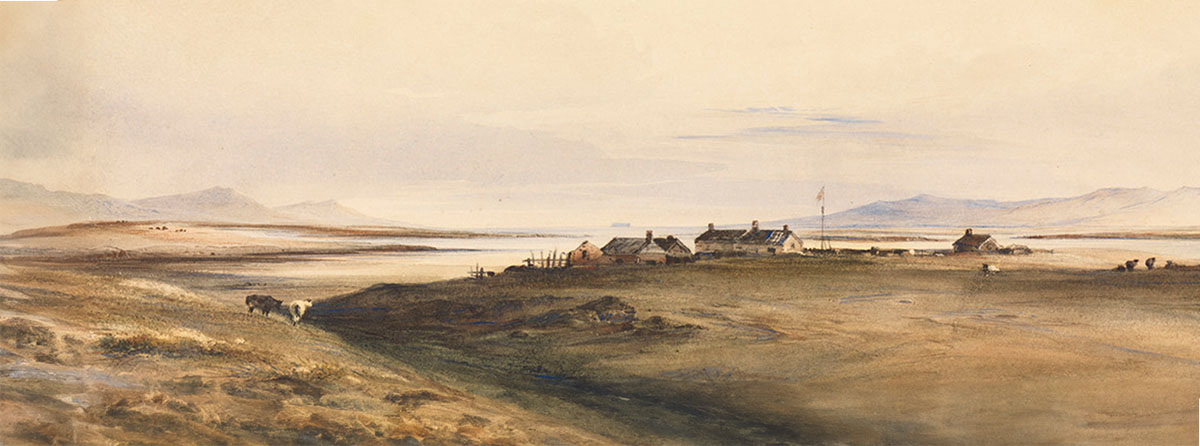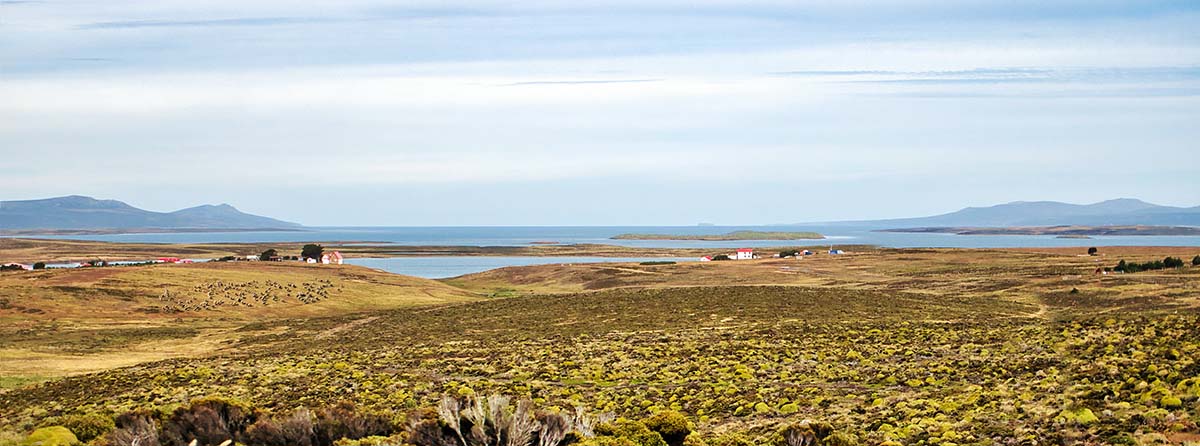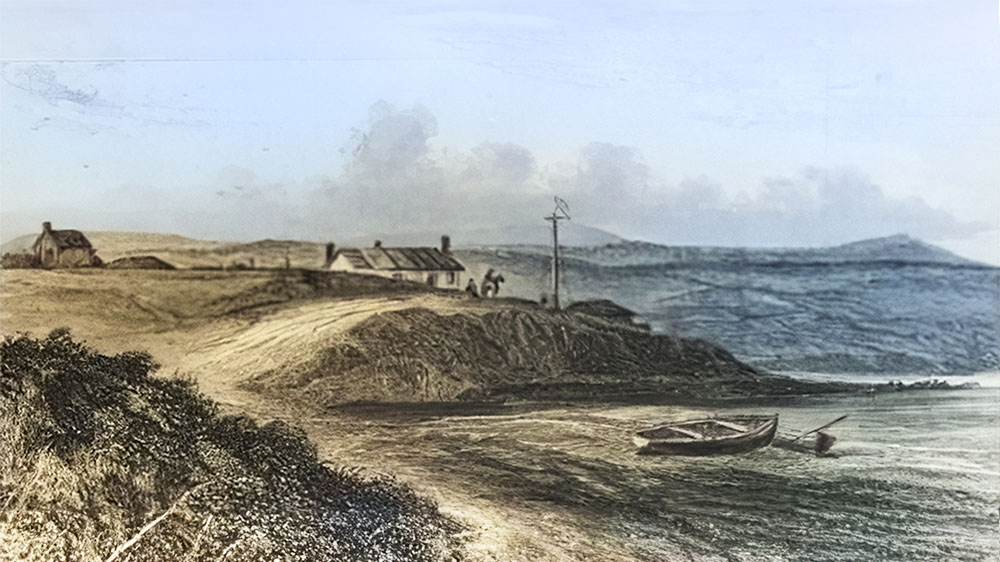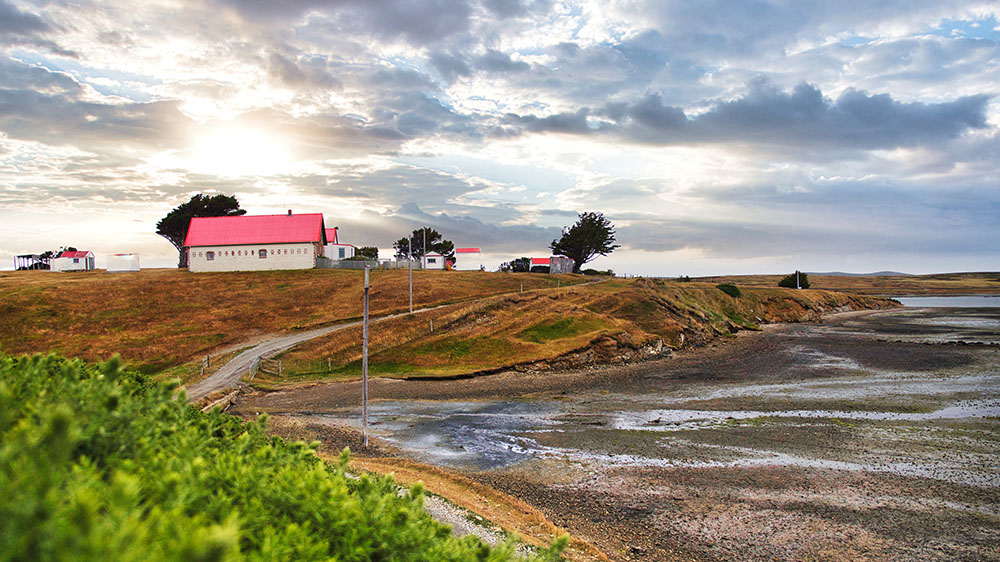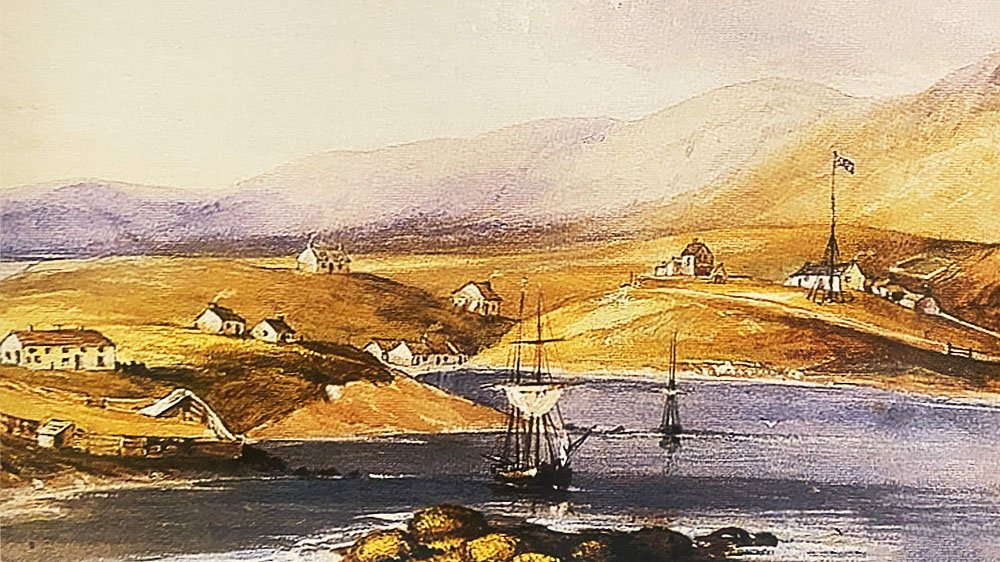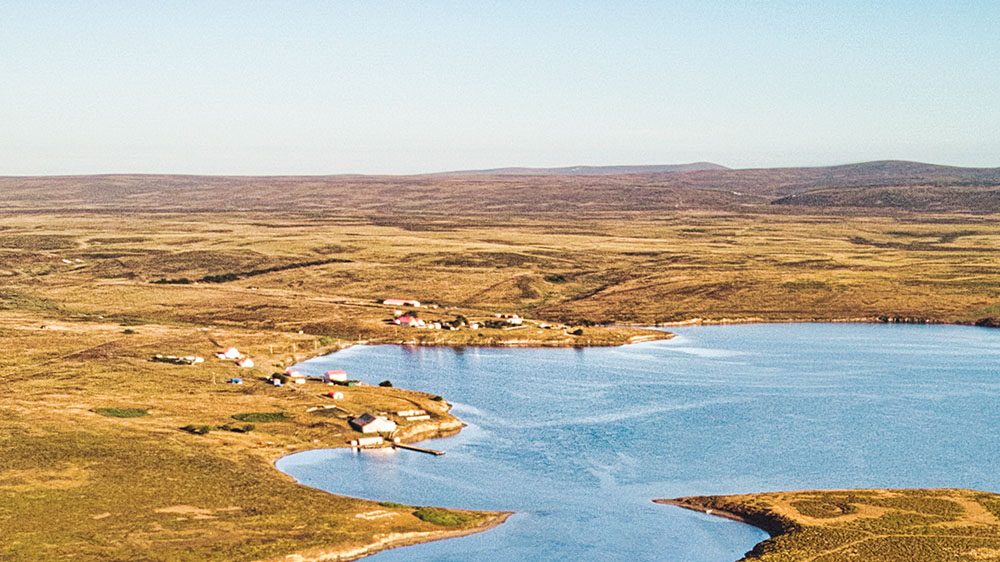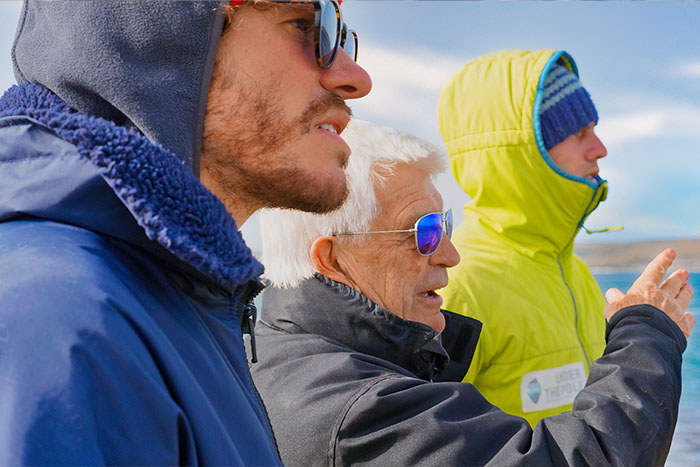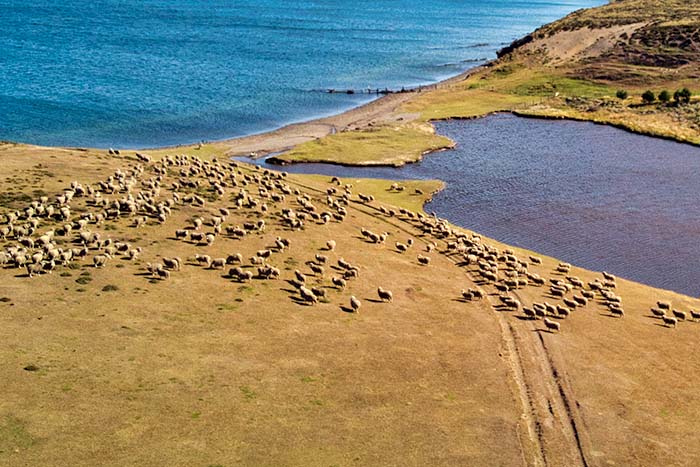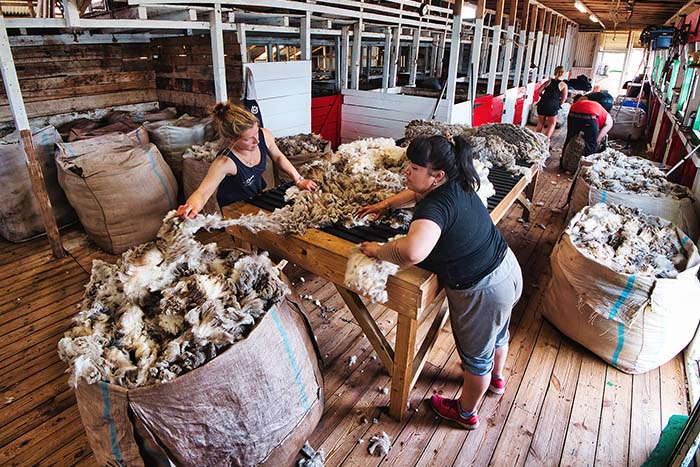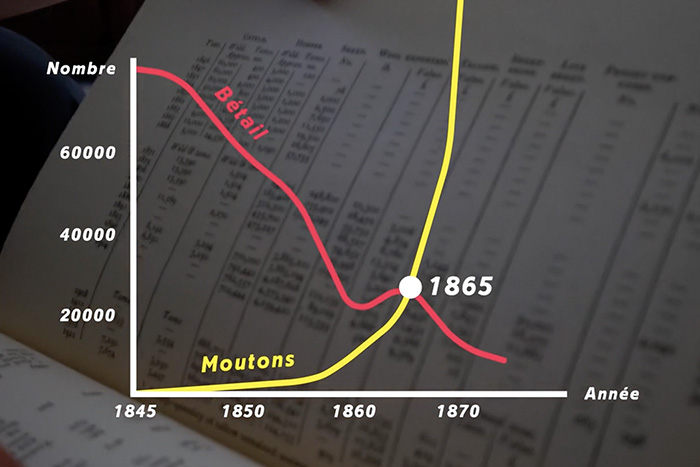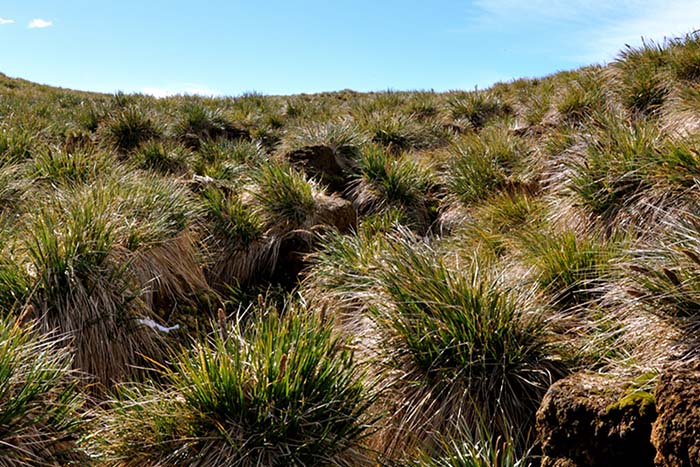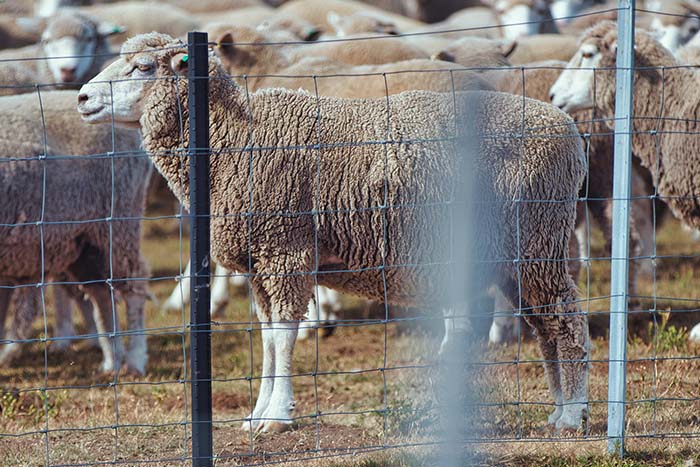Landscape Transformation⎢Falkland Islands⎢2023
The sheep
of Port Louis
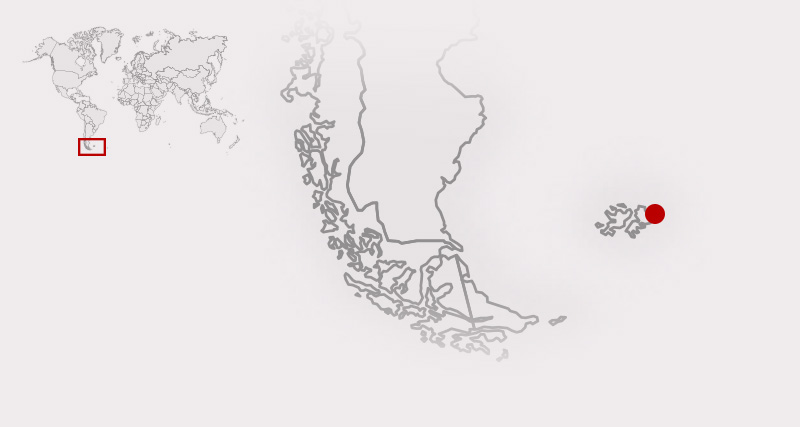
On March 1, 1833, Darwin made his first arrival in the Falklands. The HMS Beagle anchored in the archipelago’s northeast, near the sole inhabited enclave at the time: Port-Louis. He described the landscape he encountered as follows: “An undulating land, with a desolate and wretched aspect, is everywhere covered by a peaty soil and wiry grass, of one monotonous brown color.”
Two centuries later, the Falklands are home to approximately 3,000 inhabitants, with the majority residing in the capital, Port Stanley. Port Louis, situated slightly further north, transformed into a wool farm. Welcomed by its current owner, Peter Gilding, we venture forth to explore its landscapes.
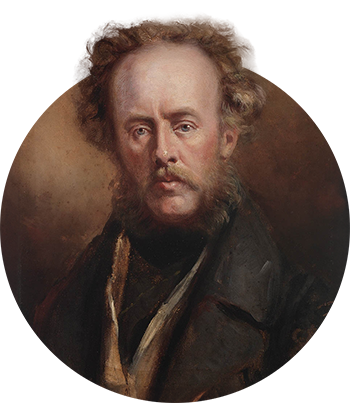
Conrad’s Painting
In this painting, we observe the sparse buildings erected by the newly established British authority in the Falklands after ousting a small Argentine colony, which numbered only a few dozen people. On the left side of the artwork, two cows stand, signifying the settlers’ pursuit of cattle breeding for sustenance in a region where agriculture proves arduous due to challenging climatic conditions. At that time, there was no sheep in the Falklands.
In this painting, we observe the sparse buildings erected by the newly established British authority in the Falklands after ousting a small Argentine colony, which numbered only a few dozen people. On the left side of the artwork, two cows stand, signifying the settlers’ pursuit of cattle breeding for sustenance in a region where agriculture proves arduous due to challenging climatic conditions. At that time, there was no sheep in the Falklands.
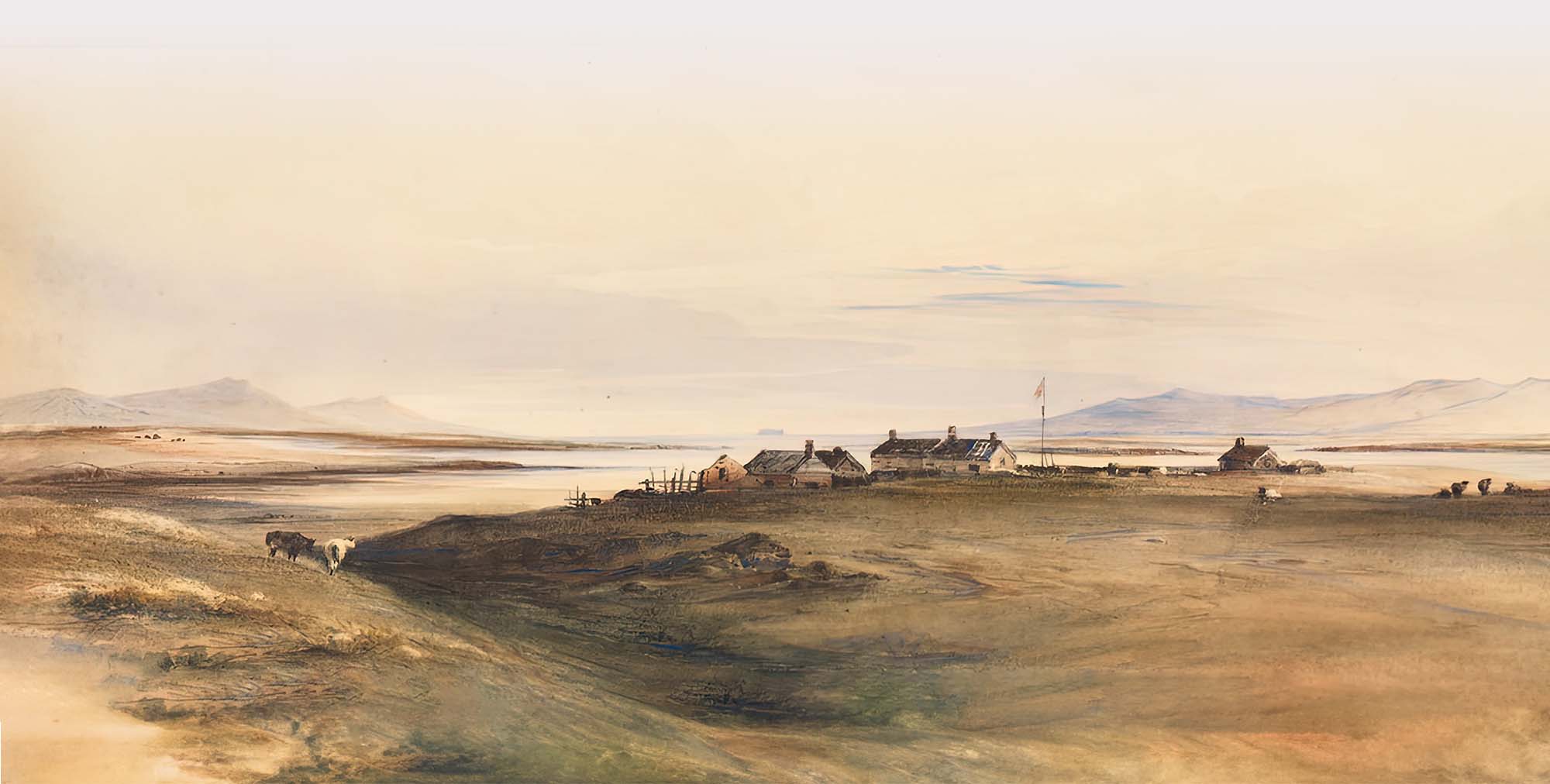
200 years later
Port Louis stands out as a fascinating destination due to its enduring resemblance to the human settlement during Darwin’s era. The population growth predominantly occurred in Port Stanley, the Falklands’ capital since 1842. Presently, remnants of the old British colonial buildings still dot the landscape, serving as a testament to the past. Moreover, Peter Gilding’s house, a noteworthy feature, is constructed using salvaged materials from these historical buildings.
Overall, the landscape has remained remarkably unchanged since 1833. The familiar contours of the mountains and the hues of the hills endure, even revealing captivating details that Conrad Martens once noticed, like the rectangular shape of Cochon Island visible on the horizon, at the center of the painting.
Yet, a significant alteration demands our complete attention: the cattle that once roamed during Darwin’s time have now made room for a thriving herd of sheep. Present-day economic activities in the Falklands revolve primarily around wool production, complemented by the fishing industry and, more recently, tourism.
A view of the old governor’s house, which was later rebuild into Peter’s house. One can easily recognize the path curving around the water and leading to the main house.
A global view of the Careenage, the small bay north of Berkeley Sound where old ships would be anchored at high tide, waiting for low tide to work on their hull.
A view of the old governor’s house, which was later rebuild into Peter’s house. One can easily recognize the path curving around the water and leading to the main house.
A global view of the Careenage, the small bay north of Berkeley Sound where old ships would be anchored at high tide, waiting for low tide to work on their hull.
The sheep, naturalist revolution in the Falklands
As England continued to dispatch an increasing number of settlers to assert complete control over the Falklands, sheep progressively replaced cattle in the region. Peter delves into an old book dating back to 1924, which attests that in 1865, the breeding of sheep for wool gradually superseded the rearing of cattle for meat production.
Currently, sheep are found across almost the entire expanse of the Falklands archipelago. The region is divided into approximately twenty vast farms, each spanning several tens of thousands of hectares, where sheep roam freely for most of the year before being sheared annually.
However, this widespread presence of sheep has not been without consequences for the local biodiversity. The voracious appetite of the sheep has led to a decline in Tussac grasses, which play a vital role in the Falklands ecosystem, serving as habitats for numerous bird and mammal species. It is estimated that 80% of Tussac herbs have vanished since human arrival in the area.
Thankfully, modern breeders are increasingly conscious of the detrimental impact their livestock can have on biodiversity. Consequently, the construction of enclosures/exclosures allows for the concentration of sheep in specific areas, leaving others free from grazing pressure to promote the flourishing of local fauna and flora.
In 1865, the herd of sheep exceeded that of cattle, which marked a turning point in the naturalistic history of the Falklands.



Donate
Help us spread the word about biodiversity by supporting our Patreon!
Social Networks
Follow Captain Darwin on Social Networks to follow our adventures!
Send an email
A question? Something to say? A word of encouragement? Send us an email!
© Captain Darwin 2023 - 1 rue des Senneurs - 29 900 Concarneau - FRANCE

